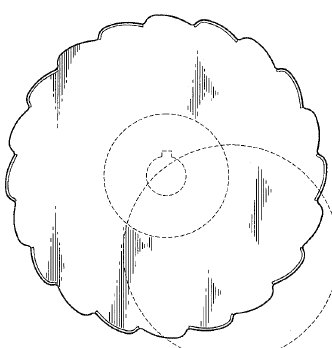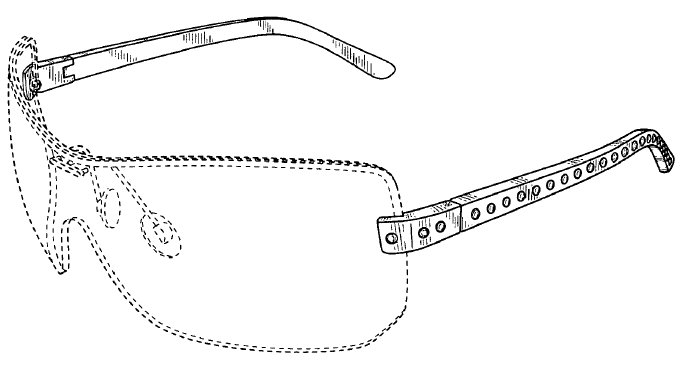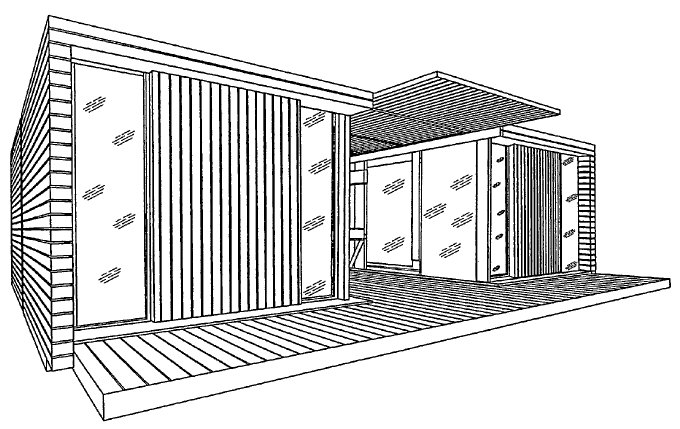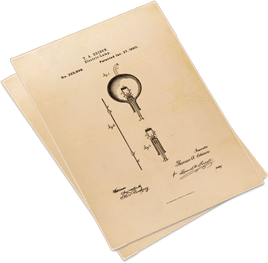Designs can be the original product of creative intellectual effort, and so may be considered intellectual property. The difficulty with design, ranging from artistic expression on the one hand to engineering on the other, is in defining what kind of intellectual property the design may be, especially when the design is applied to a manufactured item.
U.S. law provides four ways to protect your rights in a design: copyright, “trade dress” (a form of trademark registration), the design patent discussed here, and if the design of a thing makes the thing itself novel and useful, the utility patent discussed on this page. There may even be overlap among these forms of protection as applied to a particular design, so that a design, or various features of it, may be afforded protection in different ways by more than one of them.
The design protected by a design patent is the “ornamental design” of an article of manufacture — i.e., of a thing — or some part of the article. To gain patent protection the design need only be novel, and not necessarily “creative” or expressive, and it must not be useful in and of itself, although it must be embodied in a useful thing. The design need not be able to stand alone, independent of the functional thing, but the design must not be dictated by the thing’s function, or a necessary functional component of the thing. The purpose of the design patent is to protect the novel decorative or ornamental appearance of a thing — that is, its shape, configuration, and/or surface texture — separately from the function of the thing, and the thing itself need not be novel.
The design patent has just one CLAIM, usually recited as “The ornamental design of [something], as shown and described.” The design is “described” in a DESCRIPTION of the drawings in the patent. The non-renewable term of design patent protection is 14 years from the patent’s issue date. There is no periodic maintenance required for a design patent.
Design patents have been granted for the ornamental designs of a broad range of manufactured products, from industrial machinery to walking sticks, for the entirety of the product and for only a part of a product. Here are a few examples to give you an idea of what a design patent may protect:
Boring Machine |
Washing Machine |
A Blade for Cutting Machines |
Earpieces for Sunglasses |
Building |
Lounge Chair |
And game boards, articulated toys, party dresses, even paper bags – essentially the non-functional design of any manufactured item.
Although the effect of a design patent’s protection is limited specifically to the design shown in its drawing or drawings, the scale and proportions are generally not stated, and a patent can be structured to make plain that various embodiments and variations in scale and/or proportion are included, as in design patent D595,979 for a table.
The most important thing to understand about the design patent is that it is the ornamental design, not the utilitarian functional design, that is protected, no matter how detailed are drawings or description of the design, its various embodiments, or its variation as the article is used. To illustrate this, we can look at a design patent for a “Machine To Pry Open Building Door.” (10 pages.) The thing on which the design resides is a pneumatically operated device that could be used to pry open the automatic sliding doors common in commercial building entrances. The eleven drawings in the patent show the device from every angle, including a cross-section, and show it functioning, both opened and closed and attached to an actuating pneumatic hose. In spite of all of the functionality and usefulness obvious from the drawings, however, the only feature of the device protected by this patent is the one feature expressed in the single CLAIM on the first page, which reads, “The ornamental design for a machine to pry open building door, as shown and described.” (Emphasis added.) The patent does not exclude anyone from building and selling a device to pry open doors having the same kinds of components and manner of operation so long as the device does not look the same as the one in the drawings.
As noted at the beginning of this topic, there are several legal protections that may apply to original designs, and such designs that are embodied in things may lend themselves to more to one form of protection than another, or sometimes to more than one of these protections. The most appropriate form of protection depends on the nature of the design, where and how it may appear, and the effect it has or is put to. An example of a such a design is a shoe tread — the part of the sole that comes in contact with the ground:
- In the first place, a shoe tread design may well be functional and useful to the extent that it provides protection of the bottom of the foot and, to some greater or lesser degree, traction or the lack of it. In a dance shoe, for example, the featureless tread allows the shoe to slide, unrestricted, in any direction or through any rotational motion. At the other extreme, the pronounced cleats on a soccer shoe are meant to dig in, grip, and provide sure footing on the turf of a soccer field. Other configurations may restrict motion or slipping in one direction while allowing it in another, or may provide for gripping in one area of the sole — like the toe of a climbing shoe — and freedom from resistance in another. When a tread configuration can be claimed to have a specific and novel functional utility, that feature of a tread may be the subject of a utility patent. (See, for example, U.S. Patent No. 4,202,116.)
- Most shoe tread designs are either not demonstrably utilitarian, or they are variations on well-known themes and not do not possess the novelty required to gain utility patent protection. The knobs and ruts of a hiking-shoe tread, for example, can be arranged in a nearly infinite variety of geometries, all serving the same well-known functional purpose and devoid of any particularly novel design. When the design of a particular tread can be claimed to be “novel,” however, to the extent that it is not obvious or anticipated from known designs, that novel configuration may be — in some cases, may also be — protected by a design patent. (See, for example, U.S. Patent No. D329,132.)
- A particular shoe tread design may — or may also — become identified with one manufacturer of shoes. Such a design may merit protection as a configuration trademark. (See, for example, U.S. Trademark Registration No. 1,588,960.)
- And finally, if the design on or in a shoe tread is expressive of something, such as the flight of arctic terns against a midnight sun, that design and the impression (footprint) it makes may — or may also — come under the protection of the copyright. (See, for example, U.S. Copyright Registration No. VA354491.)
- Most other countries do not have design patents and use “industrial design” registration, sometimes with renewable terms, to similar purpose.


